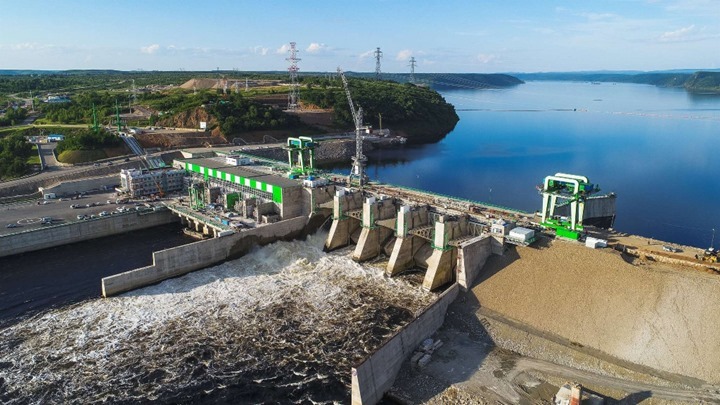The World Bank will allocate $350 million for the completion of the Rogun Dam
At the meeting of the Board of Directors on December 17 in Washington (USA) The World Bank has approved a grant from the International Development Association (IDA) in the amount of $ 350 million as part of the first phase of the program to assist Tajikistan in financing the completion of the Rogun Hydroelectric Power Station (Dam) project, according to a press release from the bank.

The Rogun Dam, whose projected installed capacity is 3,780 megawatts, will improve access to electricity for about 10 million people in Tajikistan and help alleviate electricity shortages that have become regular during the winter months. In addition, about 70 percent of the electricity generated by the Rogun Dam will be exported at an affordable price to Kazakhstan and Uzbekistan to replace electricity generation using fossil fuels, thereby reducing greenhouse gas emissions.
“The Rogun Dam project will provide assistance to Tajikistan and Central Asian countries in accelerating the transition to clean energy, stimulating economic growth and increasing resilience to climate change,” said Antonella Bassani, World Bank Vice President for Europe and Central Asia. — After its completion, households and enterprises will be able to count on the much-needed uninterrupted, affordable and clean energy supply. The World Bank brings substantial knowledge and experience to a project of this scale — from macroeconomic reforms to the implementation of a major infrastructure project in accordance with carefully developed environmental and social standards.”
Given the complexity of the project, enhanced supervision measures will be introduced to ensure its implementation in accordance with the highest international standards that promote the introduction of sustainable financial, environmental and social practices.
The Government of Tajikistan has committed to allocate 3 percent of electricity sales to the Nationwide Benefit-Sharing Program (PSIP) to finance social support for poor groups of the population and the expansion of State social security during the construction period. After completion of construction, this share will increase to 5 percent. It is expected that the funds received will be used to meet various priority social needs of vulnerable segments of the population within the framework of existing social assistance programs.
To complete the construction of the Rogun Dam, $6.29 billion will be required, which will be financed by project revenues, internal resources and development partners. This investment in the Rogun Dam will help attract $2.97 billion in grants and concessional financing from a group of development partners and investors, including the World Bank, the Asian Development Bank (ADB), the Asian Infrastructure Investment Bank (AIIB), the European Bank for Reconstruction and Development (EBRD), the European Investment Bank (EIB), the European The European Union (EU), the Islamic Development Bank (IDB), the OPEC Fund for International Development, the Saudi Fund, the Abu Dhabi Fund, the Kuwait Fund and potentially other partners.
Such collective support, as indicated in the press release, can contribute to the implementation of a wider range of economic reforms in the country, will free up the state budget funds previously allocated to this project, resulting in a reduction in the amount of resources allocated to economic development and the provision of critical services such as health and education. It will also reduce the risk of a debt crisis in the country, which could jeopardize its growth prospects.
“The Rogun Dam is an important regional project,” said Charles Cormier, the World Bank’s Infrastructure Director for Europe and Central Asia. — In addition to alleviating electricity shortages in Tajikistan and contributing to the decarbonization of power grids in fossil fuel-dependent Kazakhstan and Uzbekistan, the Rogun Dam can help balance the use of electricity generated from non-permanent sources such as solar panels and wind turbines to accelerate the transition to clean energy in the region. After the construction is completed, it will contribute to the development of the regional electricity market and strengthen regional cooperation in the energy sector.”
According to the World Bank, the Rogun Dam will strengthen the security of water resources and resilience to climate change throughout the region. Using the volume of its reservoir, the Rogun Dam will help protect downstream hydropower facilities and territories from extreme floods.


